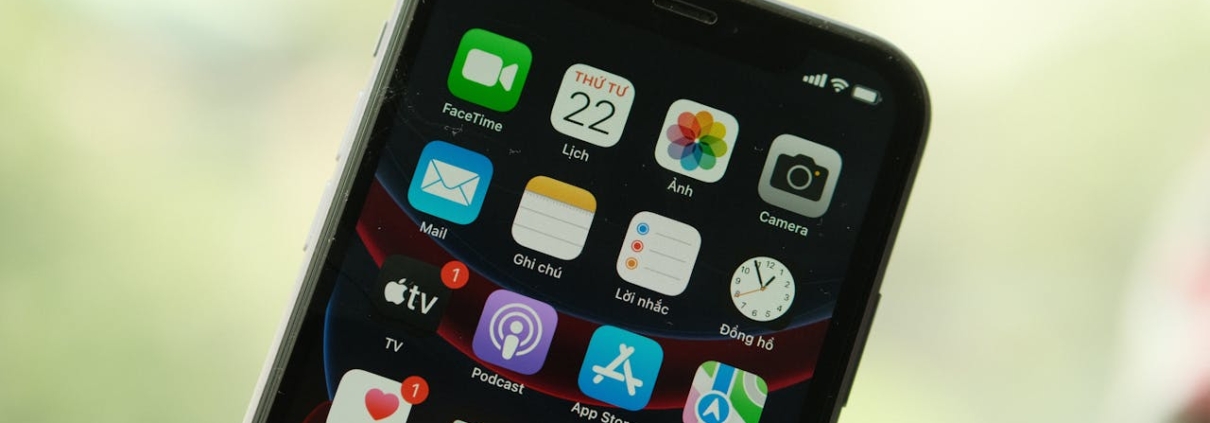What You Need To Know About Alternative iOS App Stores
If there’s one thing that Apple has done exceptionally well — it’s to lock down its ecosystem — especially the App Store. Unlike how things work on Android, there are no alternative iOS app stores that come close to what’s available on Android. Apple has taken this hard-nosed approach to ensure a consistent and secure experience for App Store users.
While we can’t necessarily blame Apple for taking this approach, it does seem a little shortsighted. On the positive end of the spectrum, the App Store does offer a more secure, privacy-focused, and quality-driven environment than anything on Android. But on the negative side, this does limit where users can download their apps and what they can and cannot do with their devices.
One of the perks of being an Android user is the sheer freedom to download apps from several digital storefronts. It’s also easy to sideload apps, allowing developers to share Android apps via their websites or email. In many ways, the Android experience isn’t much different from that of a Windows PC, where users can access apps from various sources.
But this level of freedom also presents some risks, like the transmission of malware, viruses, and botnet miners. The latter targets a user’s digital wallet to steal cryptocurrency, which is becoming a more common scenario.
Undoubtedly, all this sounds extremely scary, and some will side with Apple’s approach of locking everything down. So, does this mean we won’t see any alternative iOS app stores pop up anytime soon? No, because alternatives are on their way. Below, we’ll delve deeper into this matter and outline several ways you can access apps outside the App Store.
Why Are Alternative iOS App Stores Necessary?
We only need to look at how Android users benefit from having alternatives to Google Play to understand the appeal. While Google Play does a stellar job of vetting developers and their apps, users often feel limited. That may sound strange, considering there were over 2.43 million apps on Google Play at the end of 2023, according to Statista.
But it’s not that Google Play has a quantity problem. As massive as it is, it just can’t fulfill the needs of all its users. There are app niches that only alternative stores seem to handle well.
For example, those who seek free and open-source apps built from libraries that don’t track users prefer to download their Android apps from F-Droid. What this store does so well is provide its users with full access to the source code of their apps from a repository. F-Droid compiles the apps from the publicly available code. However, you can build these apps alone, provided you sign the APK files with your key.
The entire process is very similar to how the source code of apps is verified and later compiled on Linux systems. It seems complicated and additional work for the user, but it exemplifies the open nature of F-Droid and the Android ecosystem.
An alternative gaming digital storefront where it’s easy to grab free and experimental indie games is itch.io. It’s a multiplatform site offering Android and iOS downloads, but only with a link to the App Store for the latter. Android titles are available as standalone APKs or via Google Play.
Many Android gaming sites in Asia offer NSFW gaming experiences. Due to the risqué nature of some of these titles, it’s unlikely that Google Play will ever offer them for download.
What Alternative iOS App Stores Existed During The Early Days Of The Platform?
The early days of iOS saw the debut of several unofficial alternative iOS app stores. On February 28, 2008, Jay Ryan Freeman, aka saurik — released Cydia for jailbroken iPod Touch, iPhone, and iPad range of devices. While Cydia isn’t necessarily an app store in the true sense of the term, it does have digital distribution functionality.
Cydia is an advanced package manager that allows users to browse and download apps from a repository. These apps aren’t available on the App Store and are mostly free, with a few for sale.
While a Cydia Store that accepted payments via Amazon payments and PayPal became a reality, the developer reportedly terminated the store after experiencing issues with PayPal’s token authorization. On December 16, 2018, the Cydia Store ceased to operate, and the last stable version of Cydia made it to market on June 24, 2020.
A more accessible alternative to Cydia is AppEven. Several advantages AppEven has over Cydia are that it’s easier to use and install, no Apple ID is necessary, and jailbreaking is not required. Furthermore, AppEven was known to run on iOS 9 through 13, but now it runs on all iOS versions.
It’s possible to download modified and paid apps for free from AppEven. Unsurprisingly, Apple doesn’t endorse alternative iOS app stores like AppEven and likely never will. Apple continuously revokes the certification of AppEven and the apps available through it, so it’s not possible to enjoy the smooth functioning of these apps without workarounds.
How Flash Gave iOS Users More Avenues To Discover Great Content?
Another avenue for iOS users to access apps — particularly games — outside the App Store was via the many Flash game portals. Sites like Armor Games, Kongregate, and Newgrounds hosted some of the most creative Flash games by small developers.
But what was so special about Flash? Flash, a platform owned by Adobe, made it easy for indie developers to realize their game ideas and other creative endeavors. The accessibility of Flash was due to its programming language, ActionScript, an easy-to-learn interpreted language that ran within the Adobe Flash Player.
Released as a web plug-in, the Adobe Flash Player allowed users to enjoy games and other multimedia content in the browser. Undeniably, it was one of the most versatile cross-platform technologies available. It was also one of the few technologies that lived up to the write once, run anywhere (WORA) paradigm.
Thus, Flash games could run on a desktop PC, an Android smartphone, and any iOS device, provided there was a browser with the Adobe Flash Player plug-in. But not everyone was happy with this, especially not the late Steve Jobs.
Why Steve Jobs’s Open Letter Killed Flash?
On April 29, 2010, the Apple co-founder and CEO made several scathing remarks about Flash in an open letter. Steve Jobs lamented the poor battery performance, security issues, and redundant nature of Flash in light of modern alternatives. Of course, given Steve Jobs’s prominent position in the tech industry, everyone took notice. After the open letter, there was a slow-going shift away from Flash.
On January 12, 2021, Adobe began blocking all Flash content from running in the Flash Player and requested that users remove it from their systems. It’s sad to see the sunsetting of a technology that helped game developers and creatives build their careers. But Flash still lives on thanks to the Ruffle emulator, which runs natively on modern platforms and features a high degree of ActionScript compatibility.
Nevertheless, the open letter by Steve Jobs changed the trajectory of Flash forever. Apple users soon lost several avenues to discover and enjoy content outside the App Store. Many Flash developers soon shifted to HTML5 and WebGL game development, but some of the magic and camaraderie of the Flash community was gone.
Why Progressive Web Apps (PWAs) Caused Backlash?
Until now, the chances of legitimate alternative iOS app stores hitting the market were dire — and that’s putting things lightly. Apple had no plans to allow these stores on its platforms due to security and privacy concerns. But things will soon change due to pressure from advocacy groups, developers, and the European Commission.
Apple already faced scrutiny because of its policies on PWAs. Many developers and businesses that want to bypass the App Store will create and distribute PWAs. Developers build these using web-based technologies and languages like CSS, HTML, and JavaScript. Once built, the PWA is distributed on web servers and accessed via HTTPS.
That means any developer or business can distribute PWAs directly on their websites. The user will access the website with a desktop or a mobile browser. And with only a few clicks or taps, the user will download and install the PWA on their device. The process is so frictionless that it’s usually faster to download and install a PWA than an app from the App Store.
Furthermore, PWAs appear on the Home Screen with functionality like persistent authentication and notifications. It’s also common for PWAs to use fewer resources than native apps, which is advantageous for developers or businesses that want to distribute simple page-based apps.
Apple restricted PWAs from appearing on the Home Screen during the second beta release of iOS 17.4. However, there was some backlash from the Open Web Advocacy group and the European Commission, causing Apple to ease its stance on PWAs. Apple will now allow PWAs to appear on the Home Screen, provided developers use WebKit and adopt best practices as those for iOS native apps.
When Will Alternative iOS App Stores Be Available?
On March 6, 2024, the European Union (EU) implemented the Digital Markets Act (DMA), requiring Apple to let users install third-party stores and browsers. But this regulation only applies in EU countries and from iOS 17.4 onwards. Unfortunately, this comes at a cost to EU users who wish to use PWAs, as Apple will remove support for these in the region.
The introduction of alternative iOS app stores that closely mimic the stores on Android appears slim. Since Android runs on devices from different manufacturers, it’s common practice for each manufacturer to have an official app store. For example, Samsung has the Galaxy Store, Huawei has the AppGallery, and Xiaomi has the GetApps store.
Another big player in the Android space is Amazon, which has branded Android-compatible devices like the Fire range of tablets and TV sticks. Amazon serves users with apps and games via the Amazon Appstore, which runs on Android, Fire OS, and Windows 11 devices.
In a nutshell, many leading alternative Android app stores are so big and mature that anything similar will not appear for iOS. But iOS users can expect smaller app stores similar to APKMirror, APKPure, and Aptoide. There are also many game-specific Android stores and HTML5 game portals that may pursue the iOS EU market.
Will Third-Party iOS App Stores Appear In North America?
Apple has not revealed any plans for alternative iOS stores for the North American market. And it’s doubtful that Apple will change its position on this matter as it did with the EU.
But is this a hopeless situation for North American iOS users who crave alternative stores? Not necessarily, as rumors abound that Epic Games, the developer behind Fortnite, may push forward with an alternative store. While it’s purely speculative now, Epic Games is one of the few companies willing to land a hard blow on Apple’s tightly controlled ecosystem.
It’s no secret that Epic Games filed an antitrust lawsuit against Apple back in 2020. The game developer accused Apple of taking anti-competitive and unlawful steps against users by necessitating them to use the App Store exclusively. Epic Games also claims that the App Store charges a 30% commission on all in-app purchases, and why Epic Games attempted to make Fortnite available outside the App Store.
Unfortunately, this move caused Apple to block Fortnite on the App Store. But users can play an older version of Fortnite natively or the current version via cloud gaming channels. Epic Games recently announced they will bring their game store and Fortnite to the EU for iOS devices. While there’s no news of an American store for iOS, some tech insiders and enthusiasts claim that it will appear in the foreseeable future.
In Conclusion
Alternative iOS app stores are on their way, at least in the EU. While this is a positive first step, it would be great to see a similar move in North America and other territories.
However, we understand Apple’s concerns about protecting user data and privacy and providing a consistent user experience across the board. A locked-down ecosystem isn’t necessarily a negative if users and developers see the value. Contact NS804 today to learn how we can help you build high-quality iOS apps that run natively!











 https://unsplash.com/photos/person-using-silver-android-smartphone-70ku6P7kgmc
https://unsplash.com/photos/person-using-silver-android-smartphone-70ku6P7kgmc https://unsplash.com/photos/HfWA-Axq6Ek
https://unsplash.com/photos/HfWA-Axq6Ek
Leave a Reply
Want to join the discussion?Feel free to contribute!